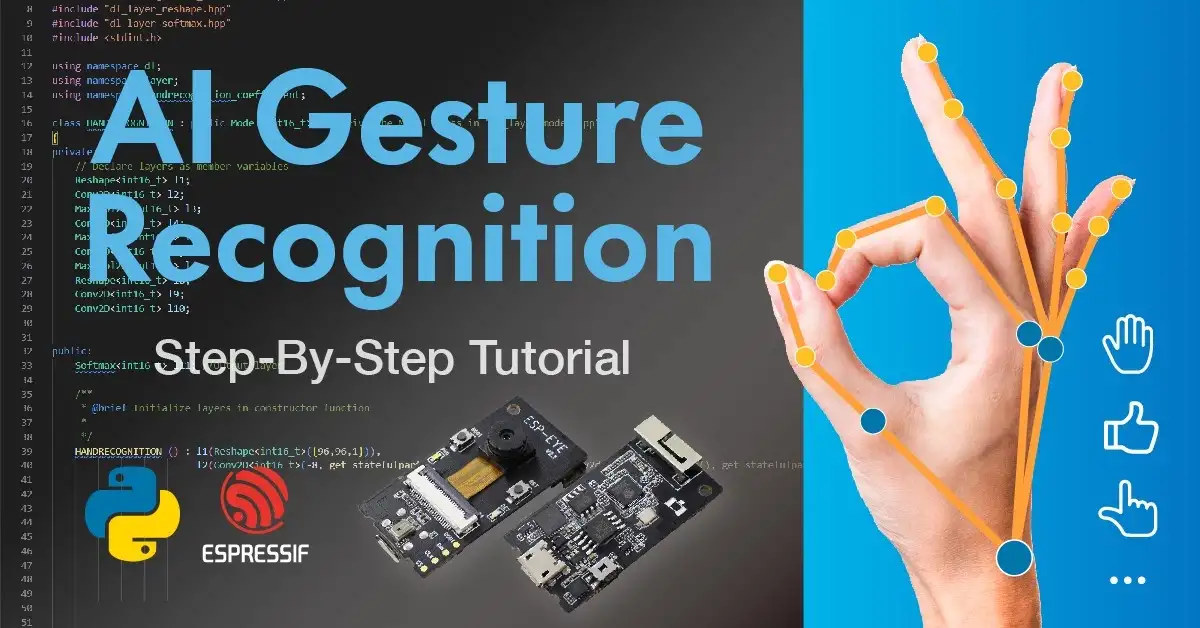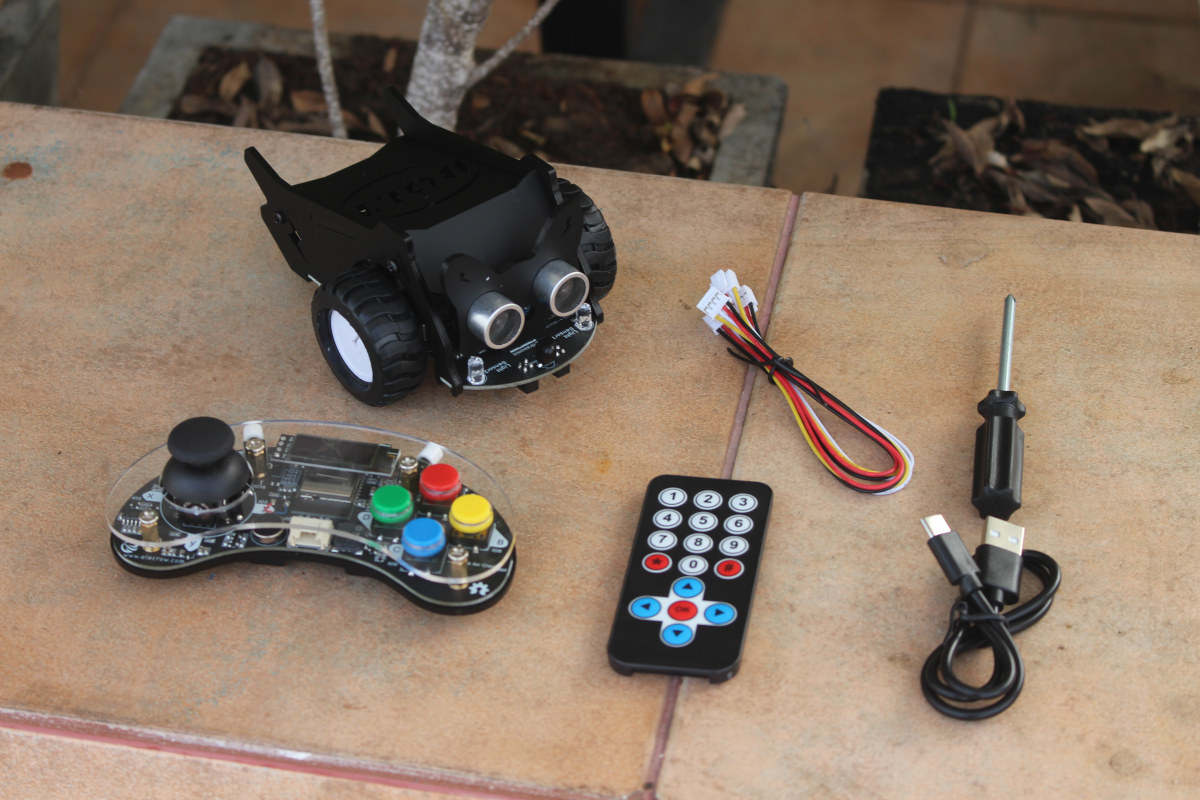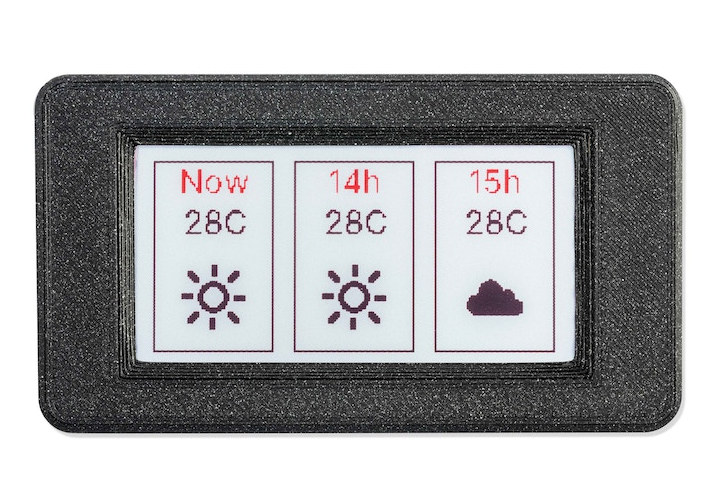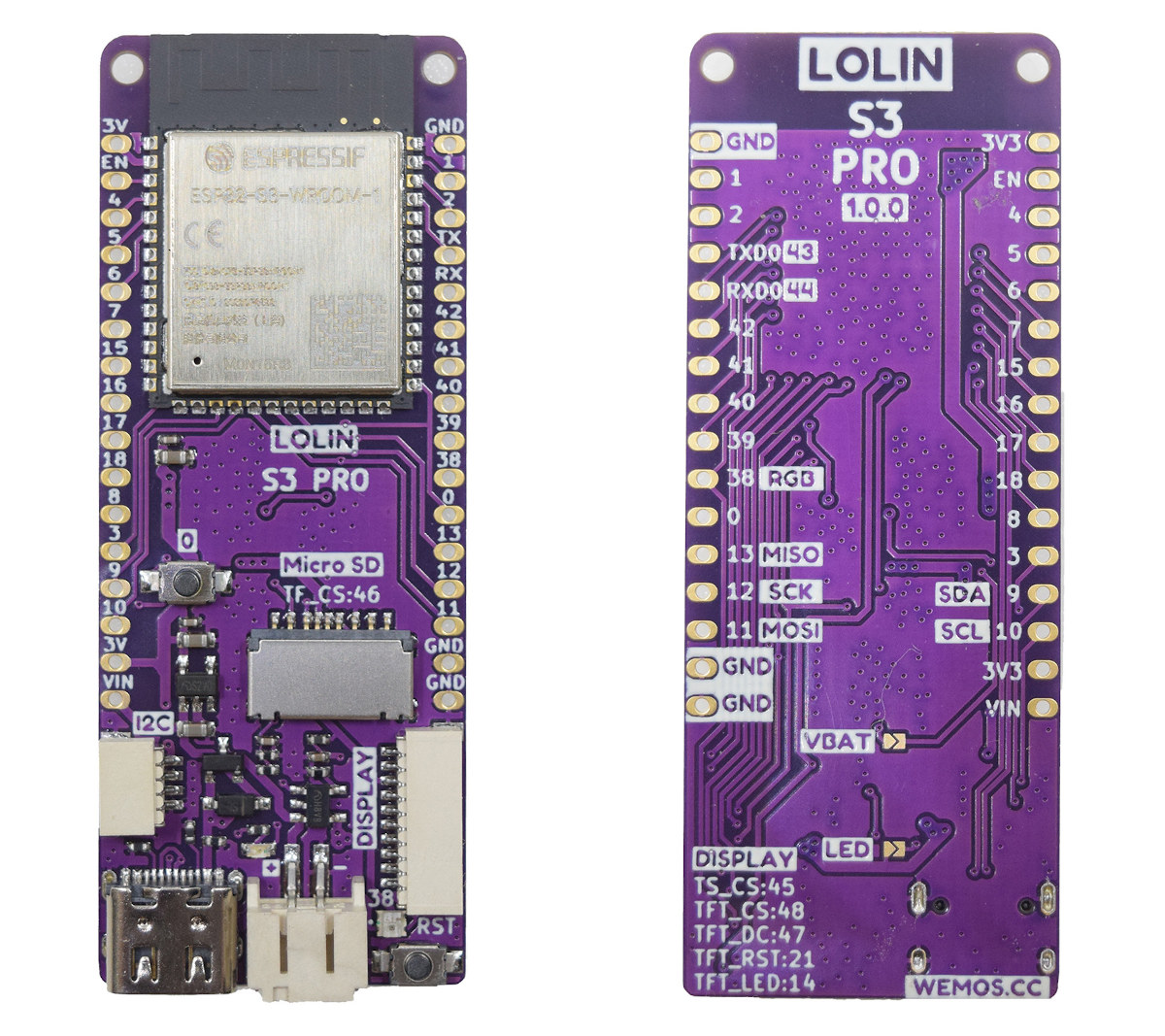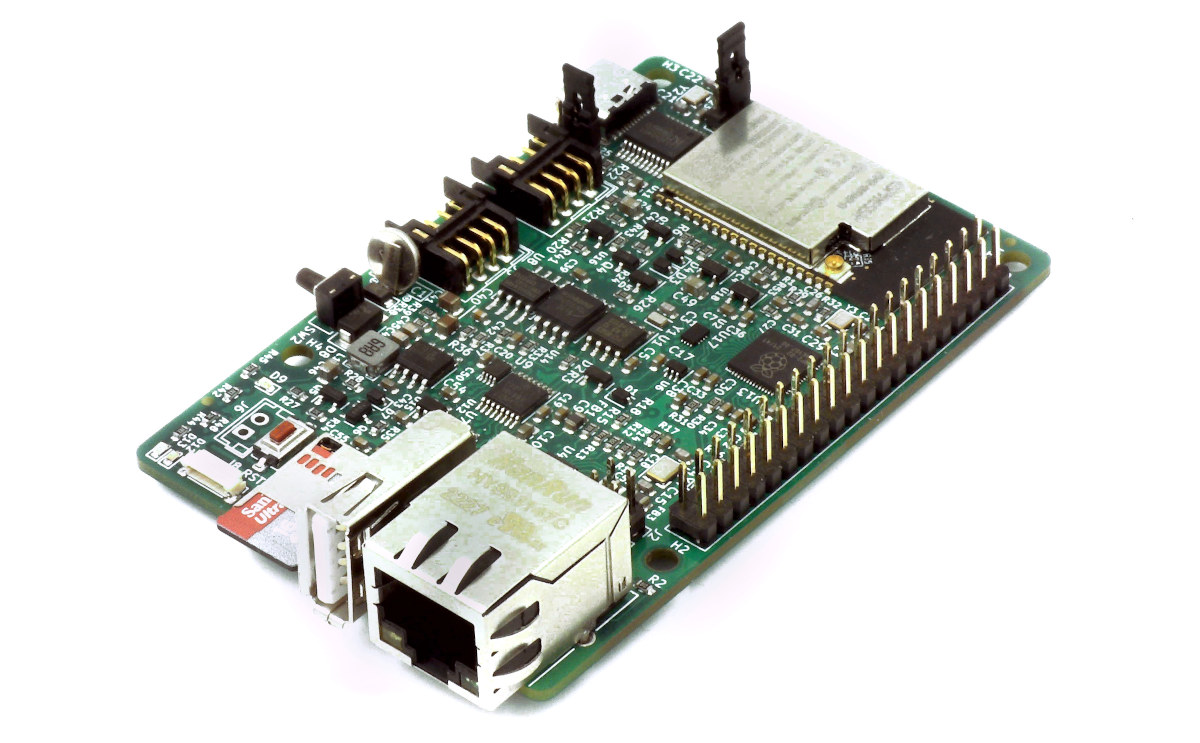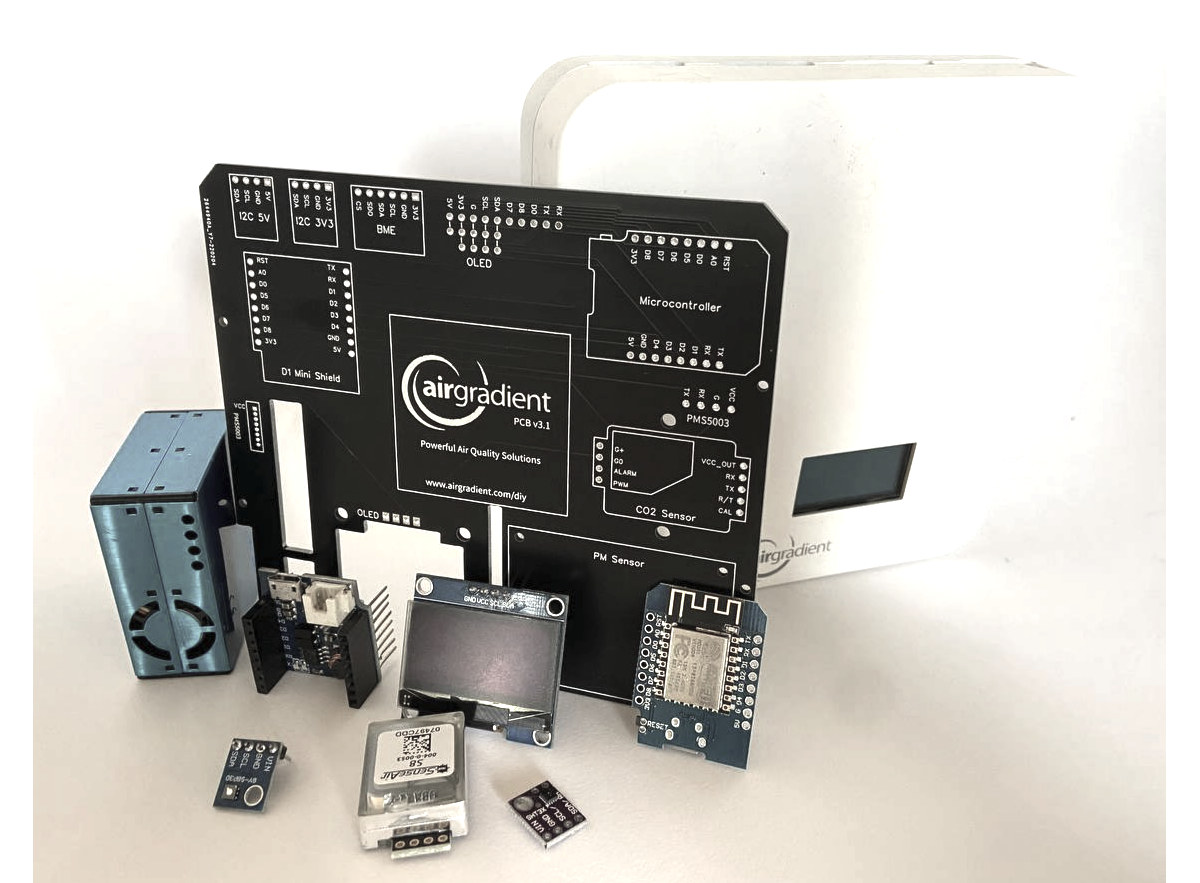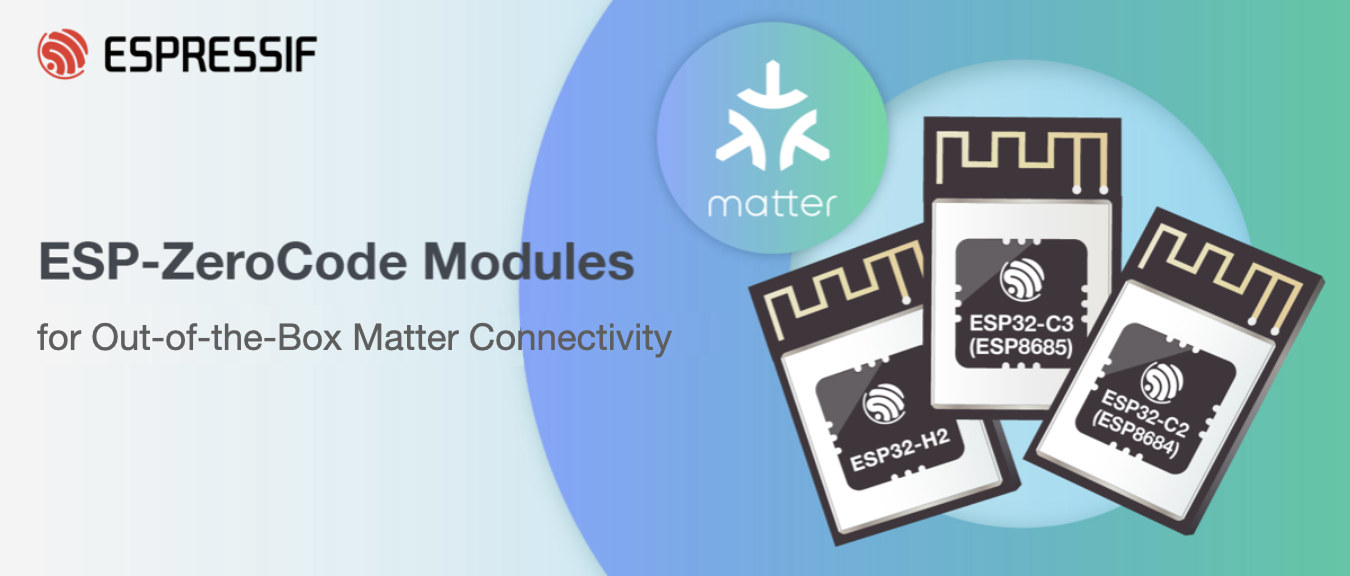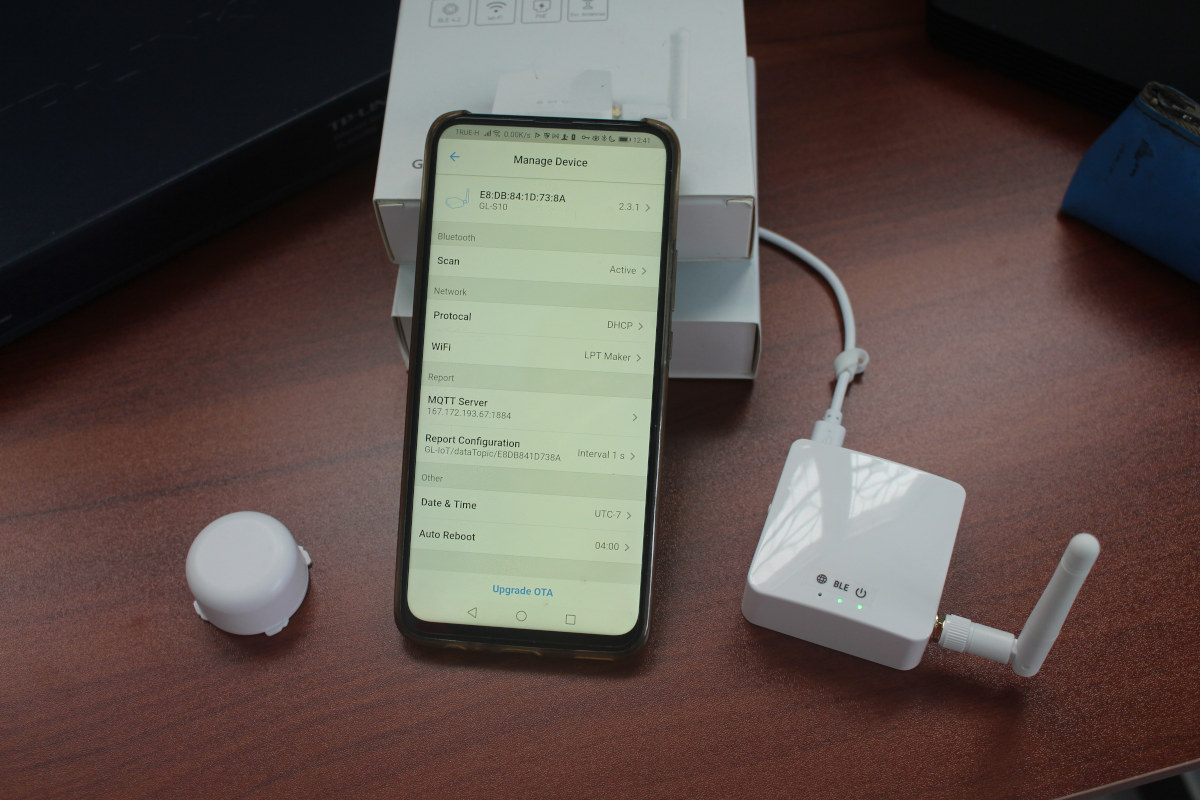Ali Hassan Shah has deployed a deep learning model for hand gesture recognition on the ESP32-S3-EYE board using the ESP-DL library and achieved AI-powered hand recognition with a 0.7-second latency on the ESP32-S3 camera board. Last year, Espressif released the ESP-DL library for the ESP32-S3 microcontroller with AI vector extensions, as well as ESP32 and ESP32-S2, along with a face detection demo that ran much faster on the ESP32-S3. Ali rolled out his own solution for AI gesture recognition and provided a step-by-step tutorial along the way. The main steps to deploying a custom model with the ESP-DL library include: Model Development that involves Getting or creating datasets. In this case, downloaded from Kaggle with 6 gestures namely Palm, I, Thumb, Index, Ok, and C. Testing, training, and calibrating the datasets Building a (CNN) Model Training a Model Saving a Model to the Hierarchical Data format (.h5) Converting the H.5 […]
Getting Started with CrowBot BOLT smart robot car
CrowBot BOLT is a smart robot car based on an ESP32 wireless microcontroller and designed for the education market with the ability to program the robot with visual programming, Arduino, or MicroPython. Elecrow sent me a sample of the CrowBot BOLT kit for evaluation so I’ll have a look at the hardware, show how to assemble it, showcase the features of the built-in firmware, and demonstrate how to program the robot with visual programming, Arduino, and MicroPython using some of the provided code samples. CrowBot BOLT unboxing The package lists some of the highlights with 16 teaching courses, support for multiple programming platforms, scalability with Grove connectors, and the inclusion of the Joystick that’s also programmable. The CrowBot BOLT comes as a kit so there will need to be some work to do to assemble the robot, but no soldering is required (in normal cases, more on that later). The […]
Inkplate 2 is a 2.13-inch WiFi ePaper display programmable with Arduino or MicroPython (Crowdfunding)
Inkplate 2 wireless ePaper display is by far the smallest display from Soldered Electronics with a 2.13-inch 3-color ePaper display while previous Inkplate models rely on 6-inch to 9.7-inch ePaper displays. The tiny display board integrates an ESP32 dual-core wireless microcontroller that drives the display, provides WiFi and Bluetooth connectivity plus some I/Os, and can be programmed with the Arduino IDE or MicroPython. Inkplate 2 specifications: Wireless module – ESP32-WROVER-E module with ESP32 dual-core microcontroller with Wi-Fi 4 & Bluetooth 4.0 connectivity, 8MB PSRAM, 4MB flash (Note: The product’s description lists 8MB flash, and 4MB RAM, but there’s no ESP32-WROVER-E in this configuration) Antenna- External IPX antenna Display – 2.13-inch ePaper display with 212×104 resolution (111 DPI) Red, black, and white colors 15 seconds full refresh time (no partial update) USB – 1x USB Type-C port for power and programming via CH340 USB to TLL chip Expansion 20-pin header with […]
LOLIN S3 Pro ESP32-S3 board offers display port, MicroSD card slot
LOLIN S3 Pro is a WiFi & Bluetooth LE IoT board built around the ESP32-S3-WROOM-1 modules with various I/Os including a display port, a microSD card slot, and a LOLIN I2C connector. The wireless module ships with 16MB QSPI flash and 8MB PSRAM, and the board also features two 16-pin headers with ADC, DAC, I2C, SPI, UART, etc…, a USB Type-C port, and support for a LiPo batteries with 500mA charging. LOLIN S3 Pro specifications: Wireless module – ESP32-S3-WROOM-1 module with: Espressif Systems ESP32-S3 dual-core Tensilica LX7 @ up to 240 MHz with vector instructions for AI acceleration, 512KB RAM, 2.4 GHz WiFi 4 and Bluetooth 5.0 LE with support for long-range, up to 2Mbps data rate, mesh networking 16MB QSPI flash 8MB PSRAM PCB antenna Storage – MicroSD card socket Display I/F – Display port for “TFT and EPD” displays USB – 1x USB Type-C port Expansion 2x […]
EsPiFF board combines ESP32 module with RP2040 MCU in the Raspberry Pi 4 form factor (Crowdfunding)
The EsPiFF board may look like a Raspberry Pi 4 Linux SBC but it is equipped with an ESP32-WROVER WiFi and Bluetooth module together with a Raspberry Pi RP2040 microcontroller that acts as a co-processor. The goal here is to provide a Raspberry Pi 4 replacement for applications that require higher reliability and even 24/7 operation without necessarily needing the processing power and multimedia capabilities of the Broadcom BCM2711 Arm processor found in the Pi or the versatility of a Linux operating system. EsPiFF board specifications: Wireless module – ESP32-WROVER module with dual-core ESP32-D0WDQ6 microcontroller with 2.4 GHz WiFi 4 and Bluetooth, 8 MB PSRAM and 16 MB flash Co-processor – Raspberry Pi RP2040 dual-core Cortex-M0+ microcontroller @ up to 133 MHz with 16MB flash used to emulate the Raspberry Pi’s GPIOs on the 40-pin header Additional storage 2 KB of fast FRAM for permanent storage of process data. (faster […]
DIY air quality monitor is based on Wemos D1 mini ESP8266 board, Sensirion SGP41 TVOC sensor
Open AirGradient is a DIY air quality monitor based on the Wemos D1 mini ESP8266 WiFi IoT board programmed with Arduino and fitted with a range of sensors including an optional Sensirion SGP41 TVOC sensor through a custom PCB designed with EasyEDA. Two versions of Open AirGradient are available. The Basic model includes an OLED display, a Plantower PMS5003 PM sensor, a Senseair S8 CO2 sensor, and SHT30 or SHT31 temperature & humidity sensor, while the Pro version adds a larger display, a plastic enclosure, and support for the SGP41 TVOC sensor. Open AirGradient key components: MCU board Basic – Wemos D1 Mini Pro Pro – Lolin D1 Mini v4 with USB-C port Display Basic – Wemos OLED shield Pro – 1.3-inch OLED display Sensors Plantower PMS5003 PM sensor Senseair S8 CO2 sensor SHT30 or SHT31 temperature and humidity sensor module Optional Sensirion SGP41 TVOC & NOx sensor (Pro version […]
Matter compatible ESP-ZeroCode modules enable plug-and-play automation solutions
Espressif Systems has just announced the Matter-compatible ESP-ZeroCode modules with Wi-Fi and/or Thread (802.15.4) wireless connectivity that are designed as plug-and-play solutions for LED lights, outlets, switches, dimmers, relays, fans, and other lighting and electrical devices. I was only recently introduced to no-code programming in a recent post by Ninephon Kongangkab explaining how to use SenseCraft firmware for no-code programming on Wio Terminal. Basically, there’s no need to know Arduino, MicroPython, or any programming language, as the user just has to press a few buttons to configure an IoT device to meet his/her requirements. With the ESP-ZeroCode modules, Espressif offers something similar using several of their ESP32 chips. The first ESP-ZeroCode modules will be offered with either ESP32-C3 (aka ESP8685) or ESP32-C2 (aka ESP8684) WiFi & BLE RISC-V SoCs, or ESP32-H2 802.15.4 & BLE RISC-V microcontroller, and ships with a Matter compatible firmware that enables “near-zero investment in development”. Not […]
Giveaway Week – GL.iNet GL-S10 BLE to MQTT Gateway
The sixth prize of this year’s Giveaway Week will be GL.iNET GL-S10 BLE to MQTT gateway based on the ESP32 microcontroller and offering Ethernet, WiFi, and Bluetooth LE connectivity. The gateway is used to gather data from Bluetooth LE devices such as beacons and can be used in warehouses, shopping malls, airports, exhibition halls, tourist attractions, etc… for personnel management, asset management, environmental monitoring, indoor navigation, and more. I reviewed the ESP32-based BLE to MQTT gateway with the provided BLE beacon at the end of last year using MQTT X open-source client and the GL-S10 Tool App for Android. It allowed me to send commands through MQTT topics, for example, to set or retrieve the beacon’s (WiFi) configuration, and receive the data through MQTT subscriptions. Some of the data include the MAC address, RSSI, ad (Broadcast data advData), and a timestamp. It took some effort to get it working, but […]


